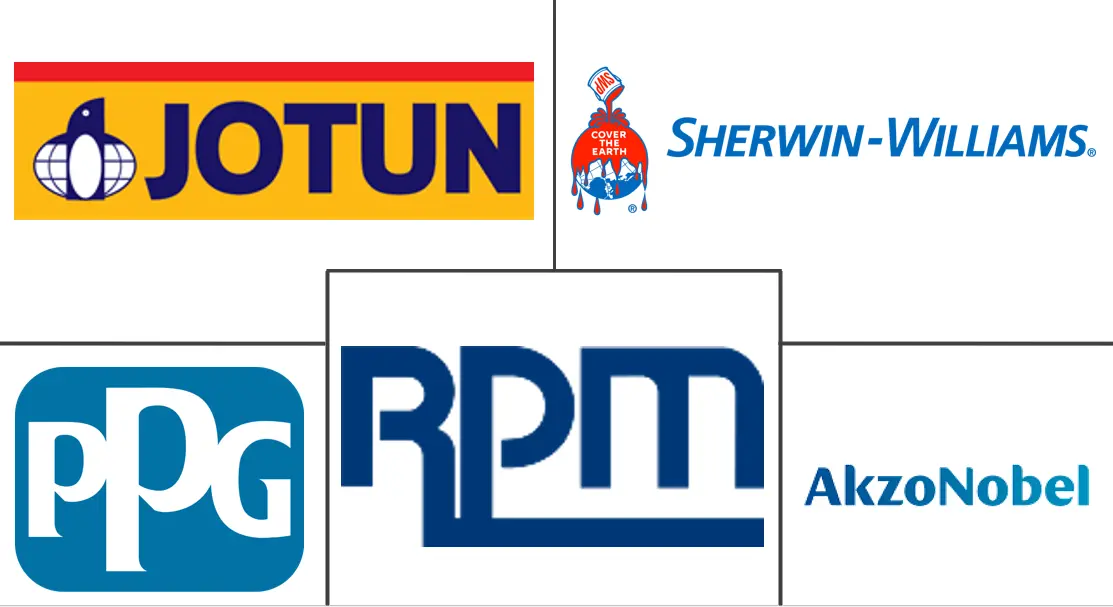US Protective Coatings Market Size and Share
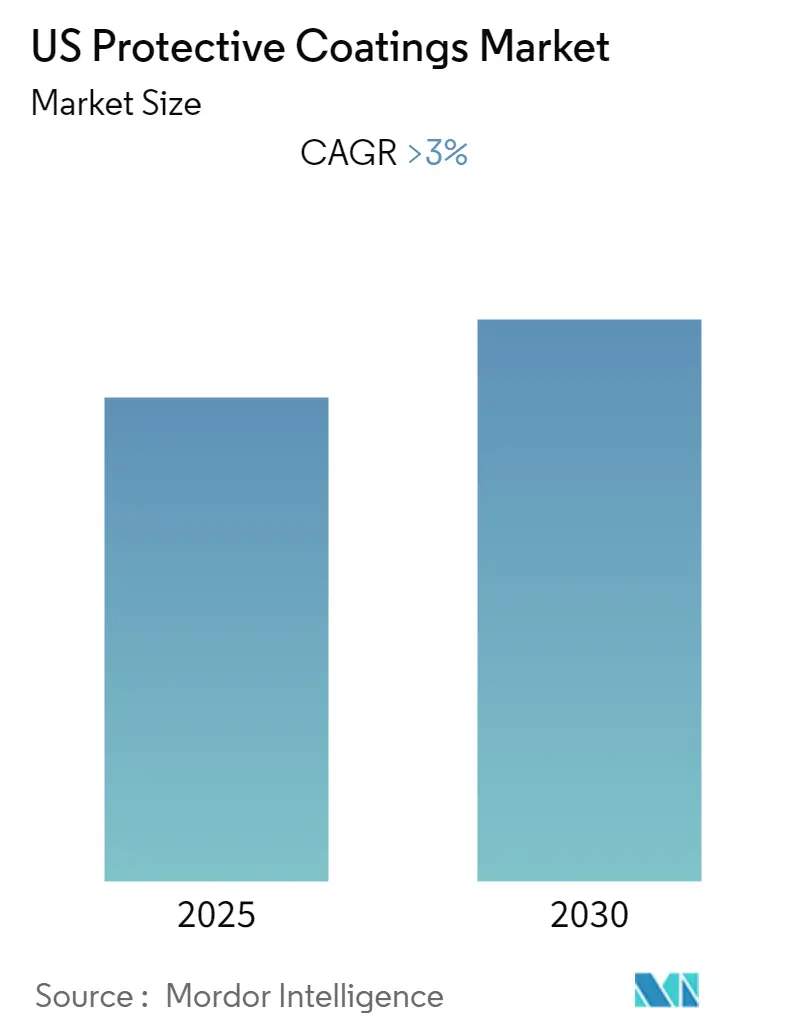
US Protective Coatings Market Analysis by Mordor Intelligence
The US Protective Coatings Market is expected to register a CAGR of greater than 3% during the forecast period.
The market was negatively impacted by COVID-19 in 2020. However, the market has now been estimated to have reached pre-pandemic levels and is forecasted to grow steadily in the future.
- The driving factors that tend to the market growth include initiatives and policies from the government for the development of infrastructure, increasing activities in the oil and gas sector, and increasing revenue generation from various sectors such as plastics, pulp, and paper, among others, and a rising trend of a shift in focus toward bio-based coatings.
- With supply chain disruptions post-COVID-19 pandemic, the fluctuation in raw material prices has created a hindrance in the protective coatings market.
- The growing options for bio-based coatings are further likely to provide opportunities for the studied market during the forecast period.
US Protective Coatings Market Trends and Insights
Increasing Activity in the Oil and Gas Sector
- The oil and gas industry is one of the key contributors to the US economy. The oil and gas industry operates in high-temperature environments, thus necessitating heat-resistant coatings. Coatings are also used to protect metal and steel structures from corrosion when exposed to moist and damp conditions. In the oil and gas industry, they are used for tanks, pipes, valves, and pumps, among others.
- To prevent corrosion during oil and gas transportation to refineries, the oil and gas industry uses protective coatings for both upstream and downstream segments. The industry has been looking for ways to reduce capital costs. The need to comply with stringent environmental regulations has resulted in the bio-based coatings demand in the region, which is expected to witness positive growth in the forecast period.
- Offshore oil and gas production faces some of the most difficult challenges. As a result, the coating systems used must be capable of withstanding these conditions. Long-term exposure to penetrating UV rays, as well as constant contact with heat waves in the oil and gas sector, boosts the demand for protective coatings.
- According to BP Statistical Review 2022, the overall oil production in the country is on the rise over the decade. For instance, in 2021, oil production in the country was 16,585 thousand barrels per day whereas, in 2020, the production stood at 16,458 thousand barrels per day. In addition, the growth rate was 7.7% yearly over the decade in the period between 2011-21.
- Moreover, the same source cited that the country witnessed positive growth in the production of natural gas. For instance, in 2020, the natural gas produced was 915 billion cubic meters whereas, in 2021, the production increased to 934.2 billion cubic meters,which is around 2.3% growth. In addition, over the decade, production has been increasing by 4.2% yearly.
- All the above-mentioned factors are expected to augment the demand for protective coatings for the oil and gas industry during the forecast period.
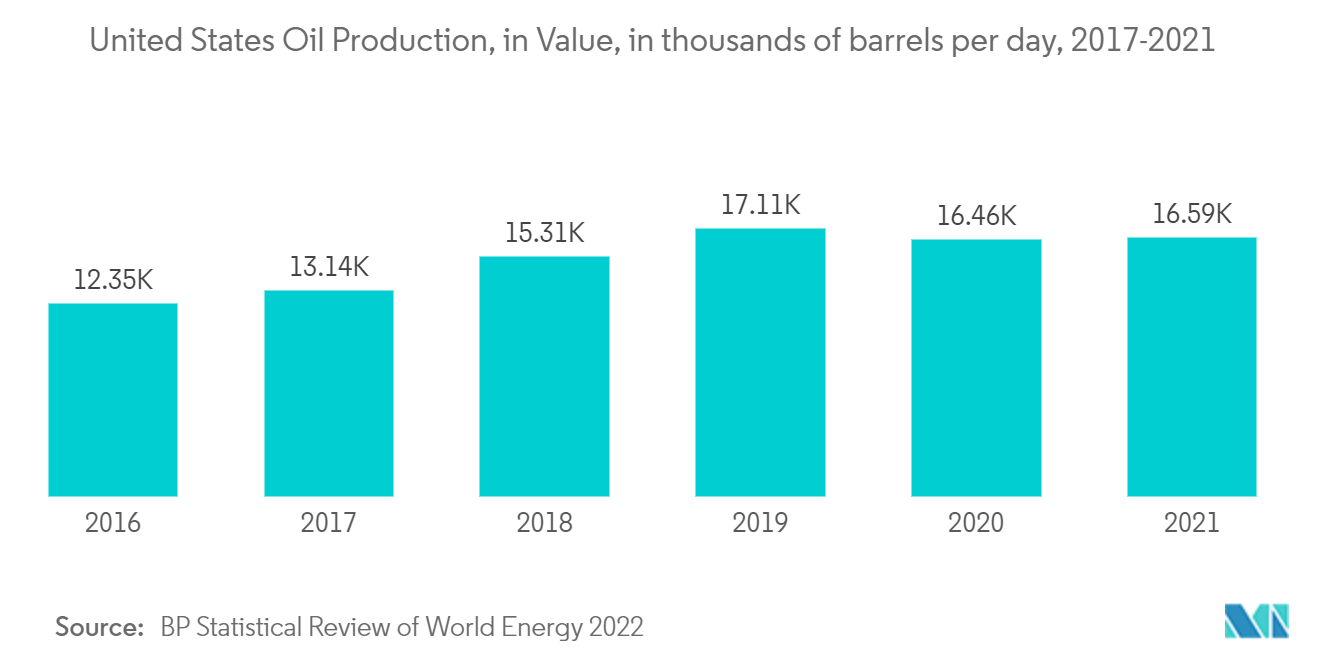
Infrastructure Sector Fueling in Demand for Protective Coatings
- The infrastructure sector is one of the major end users of protective coatings. The industry requires corrosion and environmental effects-resistant coatings due to exposure of infrastructure surfaces to heat and sunlight, water and acid rain, dust, and other chemical effects.
- The infrastructure sector uses protective coatings for bridges and coastal structures, including roads and rail structures, water treatment, public power generation and transmission, and other infrastructure, including public buildings. Moreover, organizations in the United States are shifting focus toward strict environmental regulations, which has led to an increased demand for sustainable coating systems.
- In 2021, the United States witnessed an upgrade in the infrastructure GPA from D+ in 2017 to C- in 2021. This upgrade was due to the increase in the country's infrastructure construction activities, including highways, bridges, aviation, schools, and public parks, among others. In addition, the country is expected to witness funding of USD 3,350 billion over the period of 2020 to 2029. The increasing construction and urbanization are fueling the demand for protective coatings in the United States.
- Moreover, in 2021, the White House funded around USD 2.9 billion for major infrastructure projects, which are part of a USD 1 trillion commissioned by Congress. Moreover, USD 66 billion is approved for rail infrastructure, USD 1.55 billion for highways, and USD 12.3 billion for a new tunnel between New York City and New Jersey.
- All the above-mentioned factors are likely to have a positive impact on the demand for protective coatings in the infrastructure sector during the forecast period.
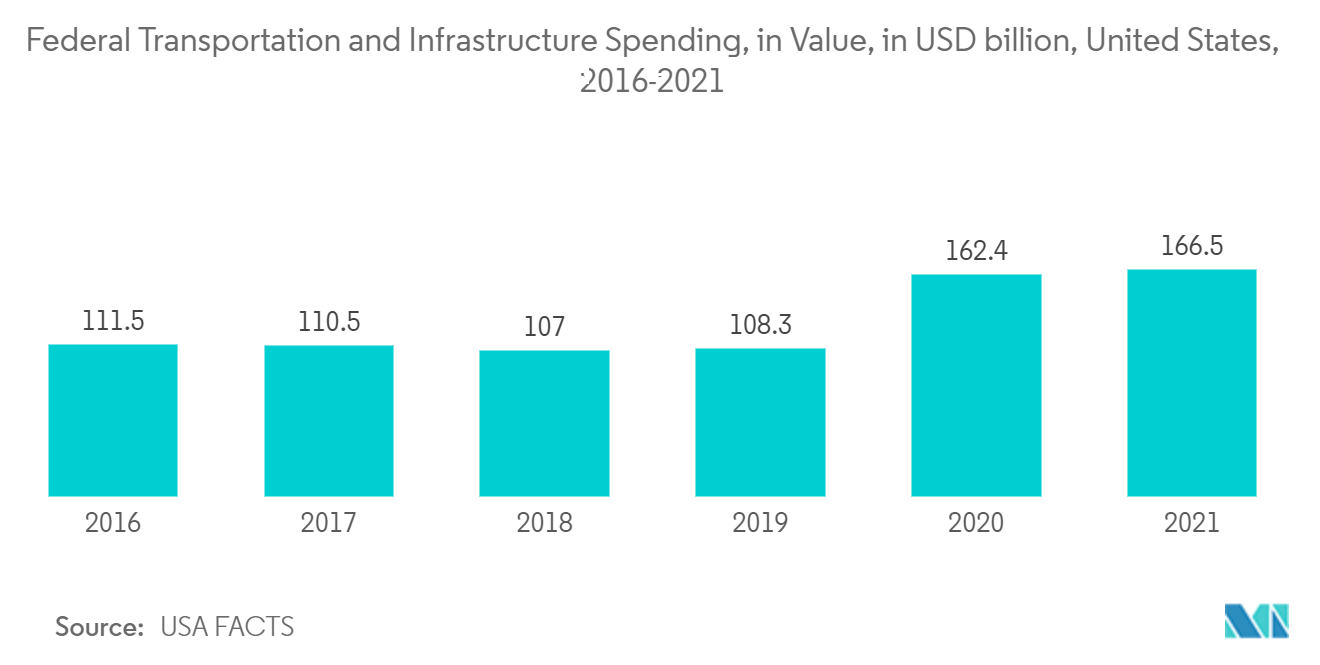
Competitive Landscape
The United States protective coatings market is fragmented in nature. Some of the major players in the market (not in any particular order) include RPM International Inc., AkzoNobel NV, Jotun, The Sherwin-Williams Company, and PPG Industries, among others.
US Protective Coatings Industry Leaders
-
RPM International Inc
-
AkzoNobel N.V.
-
Jotun
-
The Sherwin-Williams Company
-
PPG Industries, Inc.
- *Disclaimer: Major Players sorted in no particular order
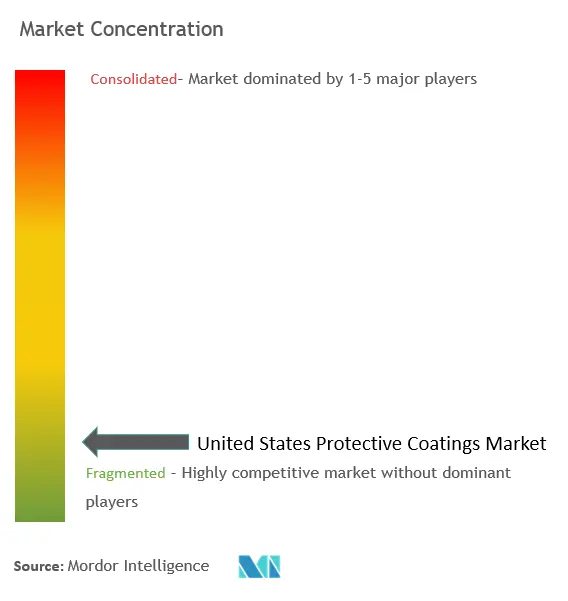
Recent Industry Developments
- January 2022: Seal for Life Industries, a paints and coatings manufacturer, acquired two privately owned industrial coatings companies based out of the United States, which include Mascoat Ltd and Verdia Inc.
- November 2022: The Protech Group acquired the liquid coatings business from Evotech Industrial Coatings, a coating manufacturer based out of Canada.
US Protective Coatings Market Report Scope
Protective Coatings are made up of various raw materials, including resins, additives, pigments, solvents, and other materials, and are used to protect infrastructure, petrochemical industries, and oil and gas industries from corrosion and environmental effects, including acid rain, among others. The market is segmented on the basis of resin, technology, and end-user industry. By resin type, the market is segmented into Resin Epoxy, Acrylic, Alkyd, Polyurethane, Polyester, and Other Resin Types. By Technology, the market is segmented into Water borne Coatings, Solvent Borne Coatings, Powder Coatings, and UV Cured Coatings. By End-user Industry, the market is segmented into Oil and Gas, Mining, Power, Infrastructure, and Other End-user Industries. The report covers the market size and forecasts for the United States Protective Coatings market. The report offers market size and forecasts in terms of revenue (USD million) for all the above segments.
| Epoxy |
| Acrylic |
| Alkyd |
| Polyurethane |
| Polyester |
| Other Resin Types |
| Water Borne Coatings |
| Solvent Borne Coatings |
| Powder Coatings |
| Other Technologies |
| Oil and Gas |
| Mining |
| Power |
| Infrastructure |
| Other End-user Industries |
| By Resin Type | Epoxy |
| Acrylic | |
| Alkyd | |
| Polyurethane | |
| Polyester | |
| Other Resin Types | |
| By Technology | Water Borne Coatings |
| Solvent Borne Coatings | |
| Powder Coatings | |
| Other Technologies | |
| By End-user Industry | Oil and Gas |
| Mining | |
| Power | |
| Infrastructure | |
| Other End-user Industries |
Key Questions Answered in the Report
What is the current undefined size?
The undefined is projected to register a CAGR of greater than 3% during the forecast period (2025-2030)
Who are the key players in undefined?
RPM International Inc, AkzoNobel N.V., Jotun, The Sherwin-Williams Company and PPG Industries, Inc. are the major companies operating in the undefined.
What years does this undefined cover?
The report covers the undefined historical market size for years: 2019, 2020, 2021, 2022, 2023 and 2024. The report also forecasts the undefined size for years: 2025, 2026, 2027, 2028, 2029 and 2030.
Page last updated on:
US Protective Coatings Market Report
Statistics for the 2025 US Protective Coatings market share, size and revenue growth rate, created by Mordor Intelligence™ Industry Reports. US Protective Coatings analysis includes a market forecast outlook for 2025 to 2030 and historical overview. Get a sample of this industry analysis as a free report PDF download.
